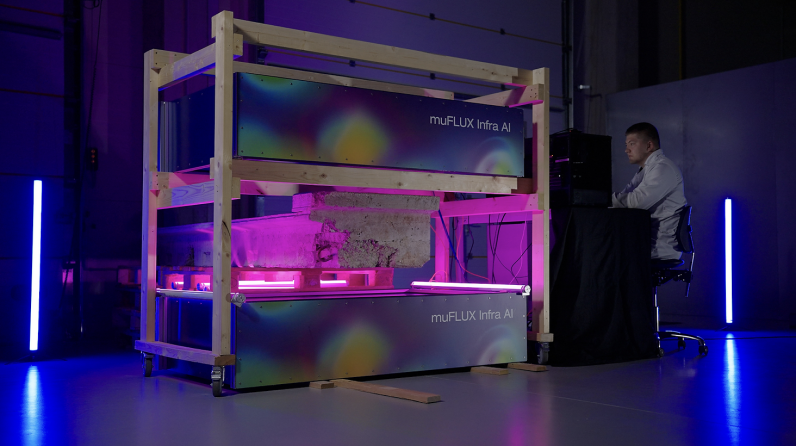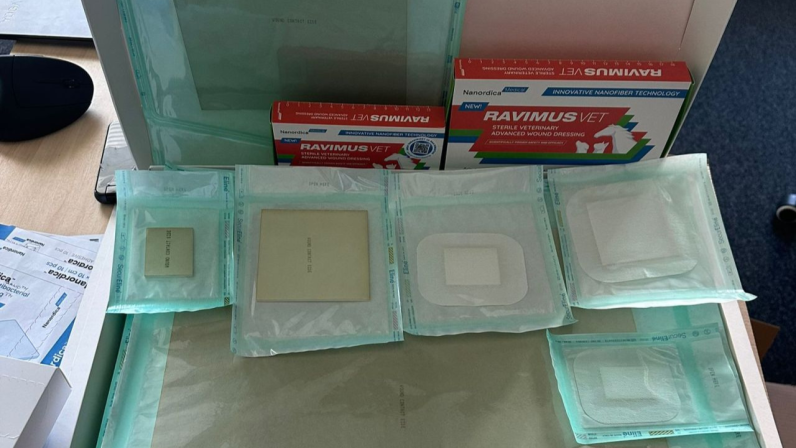In the early 2000s, Estonia was rapidly modernizing and shaking off the pitfalls Remains of Soviet influence. It was ambitiously transforming into a digital society with innovations such as e-government and online voting.
And of course, it gave birth to Skype, the company that would launch the tiny Baltic nation’s journey to becoming an emerging power and a “Unicorn Country.”
Since then, Estonia has established itself as a leader in the creation of high-profile software companies such as Bolt and Wise. Now, it aims to become a deeptech hub, accelerating the development of research- and science-based entrepreneurship.
The deeptech sector in Estonia is still relatively young: up to 70% of companies have emerged in the last five years.
TNW Conference 2025: Returning to NDSM June 19-20, 2025 – Save the Date!
As we wrap up our amazing 2024 edition, we are excited to announce our return to Amsterdam NDSM in 2025. Register now!
However, the sector is growing rapidly. In 2023, deeptech startups achieved a record turnover of €227.2 million, an increase of 14% compared to the previous year. They also raised €394 million, compared to €254 million the previous year.
Towards a deeptech hub
The Estonian government’s vision is for deeptech companies to account for around 30% of the country’s total startup volume by 2030. This translates to 500 deeptech startups, up from 132 in 2023.
A key component of Estonia’s action plan is to facilitate greater access to finance, primarily in the form of grants and angel investments, especially for early-stage companies.
Another way to foster entrepreneurship in academia is by offering specific courses for students. Equally important is ensuring a smooth exit process.
According to Sten Tamkivi, one of Skype’s first executives and a partner at venture capital firm Plural, Tallinn University of Technology (TalTech) and the University of Tartu have taken active steps in recent years.
“They have created their own venture arms and made sure that the process of spinning off intellectual property and capital is easier,” Tamkivi tells TNW.
A third component is its own start-ups and its ability to turn scientific advances into commercial products.
Cosmic rays for 3D scanning
Tallinn-based GSCAN uses muon tomography for 3D scanning and chemical composition analysis.
Muons are subatomic particles that make up half of the cosmic radiation that reaches the Earth’s atmosphere.
GSCAN collects muons with its proprietary detector technology, which combines the use of AI to measure the flux of muons penetrating an object, create 3D visualizations, and analyze materials.


“This is a platform technology that can be used everywhere, like X-ray tomography,” Andi Hektor, co-founder and chief strategy officer of the startup and former CERN researcher, tells TNW.
According to Hektor, muon tomography offers significant advantages over X-rays. Firstly, it has the ability to penetrate very large objects and provide information about the chemical composition of materials. It is also safer for humans and the environment, as muons are the result of natural radiation.
One of GSCAN’s focus areas is non-destructive testing (NDT) for the built environment. NDT helps assess the properties of a material or structure to detect potential defects without causing damage.
Hector offers an example.
“The world is full of old bridges, buildings and tunnels built from reinforced concrete. Reinforced concrete has a limited lifespan and inside these structures there are metals that are subject to corrosion.”
“Understanding what happens inside these structures is vital for both security and economic reasons,” he says.
GSCAN has several projects under its belt so far, including the scanning of two old nuclear reactors for their safe decommissioning process.
In addition to the built environment, the startup also uses its technology for customs and security applications.
In March, GSCAN raised €3 million in a seed funding round from investors including Bolt founder Markus Vilig. This brought the total amount raised since its founding in 2019 to €5.1 million.
Green carbon and graphite nanomaterials
Up Catalyst, a spin-off company from the University of Tartu, transforms CO2 emissions into green carbon nanomaterials and graphite.
The startup’s technology extracts CO2 from waste biomass and flue gases from heavy industry emitters and then converts it into green carbon through a process called molten salt electrolysis.
“We are basically electro-transforming carbon dioxide gases into carbon nanomaterials,” Apostolos Segkos, head of development at Up Catalyst, tells TNW.
The startup’s first goal is to achieve price parity with traditional carbon sources. The second is to reduce carbon dependence on fossil fuels, while minimizing the environmental impact of raw material production.
According to Segkos, Up Catalyst’s mission aligns with the EU’s goals for the energy transition and the need to ensure a reliable (and ideally domestic) supply chain of critical raw materials.
“Graphite, among other key carbon products, is considered a critical material by the EU, especially since we import around 99% of it, most of which comes from China.”
Graphite is a key component of electric vehicle batteries, which typically contain between 50 and 100 kg of the material.
Carbon nanomaterials, meanwhile, are valuable additives in energy generation and storage devices, including batteries, fuel cells and solar cells.


In July, Up Catalyst received a €2.36 million funding boost to accelerate the development of a pilot industrial reactor.
According to the startup, the reactor will be able to produce 100 tons of CO2 per year, which can deliver 27 tons of green carbon materials.
Up Catalyst was founded in 2019 by the University of Tartu.
“We had a good success story because we managed to completely transfer the intellectual property from the university to the company,” Teele Niidas, CMO of the startup, explains to TNW.
Despite some “difficult bits” of the negotiation, the spin-off process was “pretty easy,” Niidas says.
“I think everyone [in the Estonian ecosystem] “He realises that science-based start-ups have a great future if they receive support from academia.”
Harnessing nanotechnology for wound treatment
Another startup in the field of nanotechnology is Nanordica Medical, which has developed an antibacterial wound dressing.
The startup, which emerged from Estonia’s National Institute of Physical Chemistry and Biophysics (NICPB), sought to create a more effective solution for bacterial wound infections, which affect an estimated 100 million people worldwide, including those with diabetes.
“Conventional wound dressings use silver,” Olesja Bondarenko, CEO of Nanordica, tells TNW.
“Silver has good antibacterial properties, but the problem is that it also has side effects and can cause wound healing problems.”
After further investigation, the team discovered that the key was in the combination of silver with copper nanoparticles.
“We found that they amplify each other and at the same time reduce adverse effects,” Bondarenko says.
Nanordica’s dressing attracts bacteria and inactivates their effect, allowing tissue regeneration and wound healing. The Tallinn-based start-up claims the solution offers eight times better treatment compared to standard care products.
The company has already conducted a small clinical trial in Estonia with 30 diabetic patients suffering from food ulcers. The results were promising: the wound dressing demonstrated twice as fast healing compared to a commonly used silver alternative.
Nanordica plans to confirm these findings with a larger upcoming trial and hopes to obtain approval from the EU health regulator this year.
Following the planned commercialisation of its wound dressings in 2025, the company will seek to expand its range of antibacterial products.


Nanordica has recently raised €1.75 million from venture capital investors. In the first few years after its founding in 2019, it relied on founder funding and grants from EIC, Enterprise Estonia and NICPB, from which it purchased the intellectual property.
According to Bondarenko, software has historically dominated investor interest.
“But now I think there is a real transformation,” says Bondarenko.
“There is a growing awareness that science-based deeptech is very important. And the same investors who were focusing on software are now considering other possibilities.”
“There is a good chance that we will soon see unicorns in the healthcare technology sector and, more broadly, in deep technology.”
#Science #spawning #generation #booming #deeptech #startups #Estonia